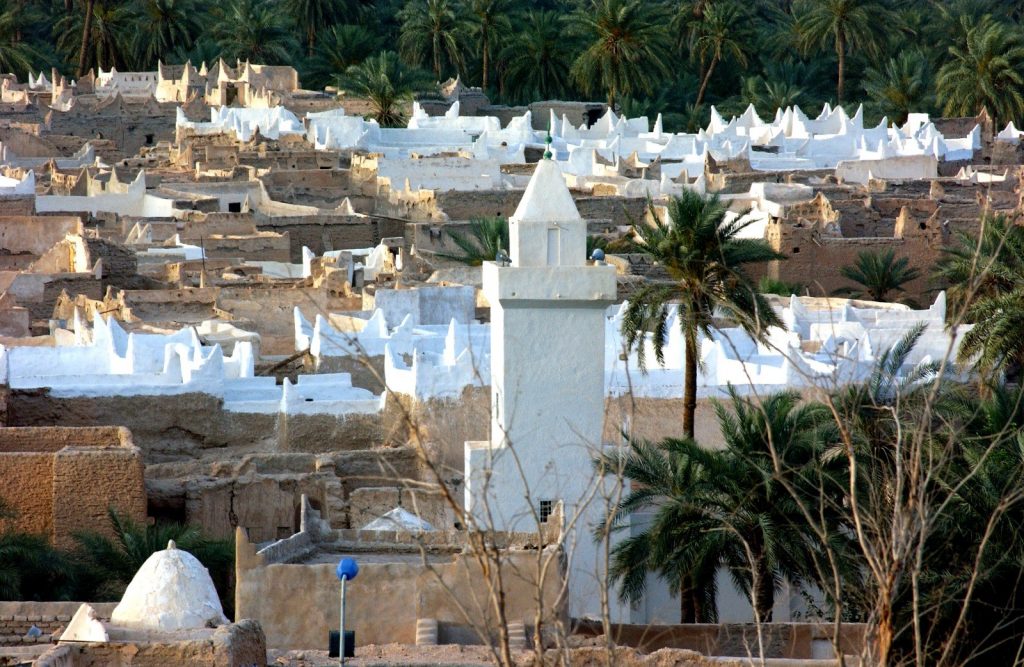By: Yaqin Laswad
Tripoli, Libya_ The sun, a friend to some and an enemy to others. Depending on your geographical coordinates. Down below and up above in the poles and in the freezing regions the sun is sought after luxury, but here in the vastness of the Sahara Desert it could become harmful and cause a great obstacle in the daily lives of the inhabitants of the city of Ghadames in Libya.
Throughout history these people have struggled to survive under the scorching sun and in an environment whose hardships affected their lifestyle, city planning, architecture, behavior and culture. In general, life in Ghadames has been focused on coping with this harsh climate.
A Light and Shadow Narrative
The very essence of surviving the sun in Ghadames by its inhabitants has been the focus of the study of “light” and “shadow” by the Libyan photographer Hakim Madi which materialized in his art exhibit titled “The Struggle Against the Sun” held at the Art House in Tripoli from 27 February to 9 March 2023. This photography art exhibit is based on his Ph. D. thesis which carried the title “Battle Against the Sun”, at the University of Bauhaus Weimar, Germany in 2012.
A number of foreign ambassadors to Tripoli, diplomats, artists, academics, guests, journalists and the general public attended the opening ceremony of the photography exhibition.
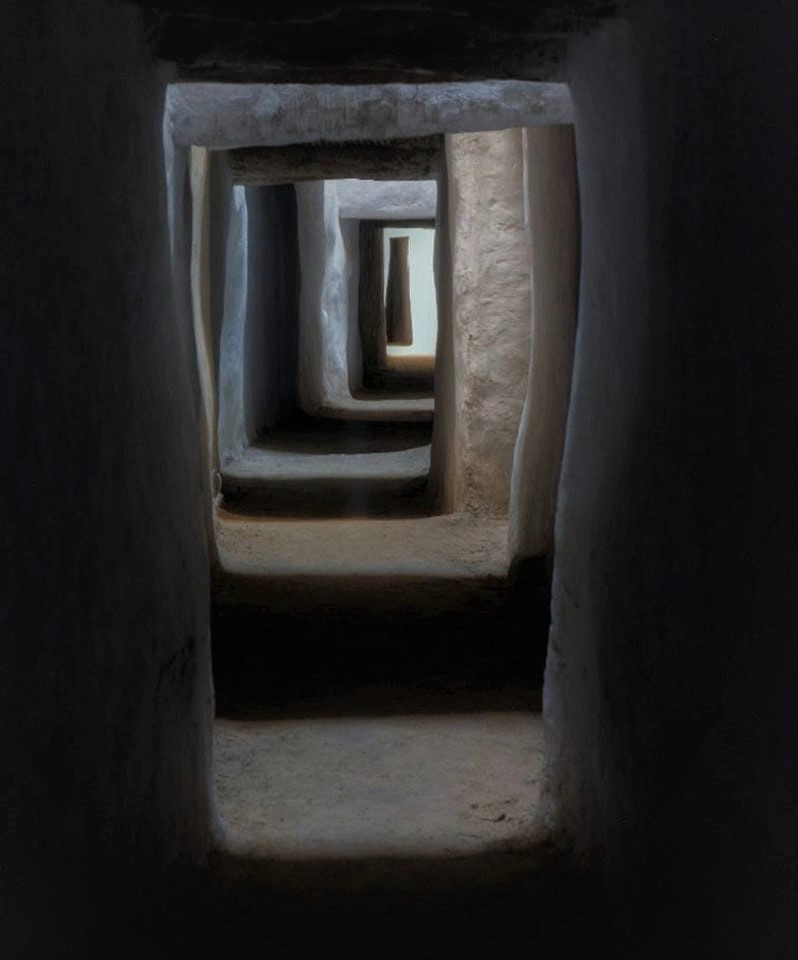
The exhibit was sponsored by the National Observatory of Architectural and Urban Heritage (NOAUH) and the Chair to Value Joint Arab and International Work (CVJAIW), both are affiliated with the Arab League Educational, Cultural and Scientific Organization (ALECSO).
Eng. Mohammed Surmani, CEO of the NOAUH in Libya, said in his opening speech that “this exhibition is in support of the efforts exerted to remove the ancient city of Ghadames from the list of endangered World Heritage Sites and to preserve the material heritage of the Libyan people.”
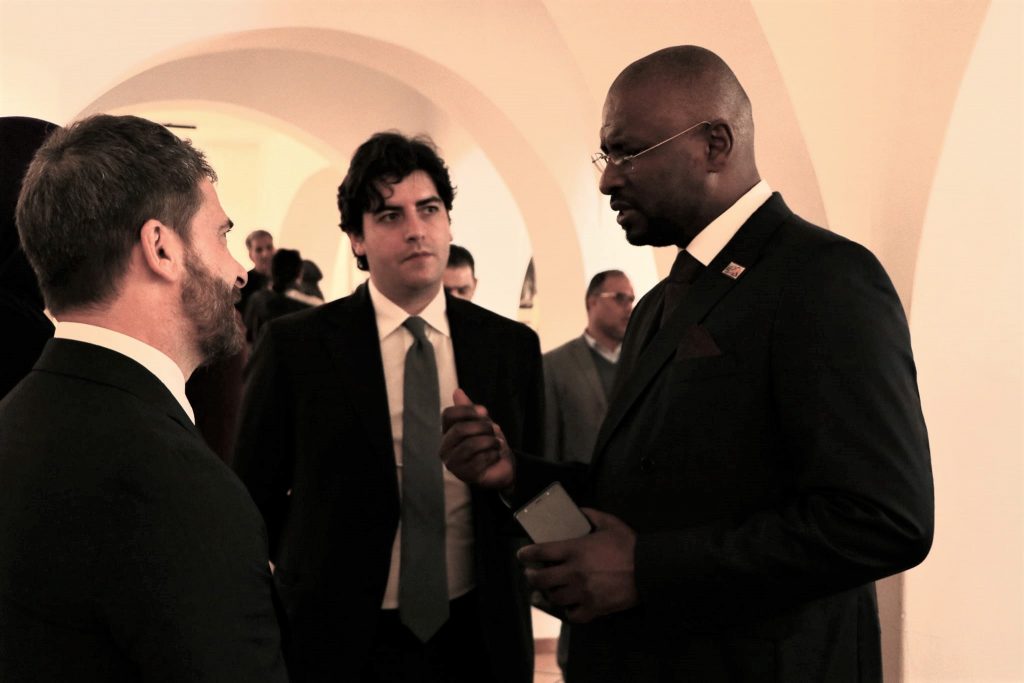
Surmani applauded what he called the “great efforts that have been made by both the Arab League and ALECSO in promoting heritage awareness, and strengthening inter-Arab cooperation in this regard.”
The exhibit, he said, was important for focusing attention on Ghadames as an a historical and unique architectural heritage and it comes on the “Revival of Arab Cultural Heritage Day” which commemorates the destruction of the Namroud ruins of the city of Mosul in Iraq by ISIS in May 2015. It has become a reminder of the importance of preserving the Arab cultural heritage every year.
Mr. Surmani who is also the appointed General Coordinator of the Observatory of Architectural and Urban Heritage Project in Arab countries by ALECSO in 2019, was himself one of the founders of the Observatory project and was instrumental in bringing such organization to existence.
One of the impressions and the facts that can be derived from the “Struggle Against the Sun” exhibit is that the scorching sun and Ghadames’ inhabitants have long since learned to live in unison. A birth of a culture, or if you will a civilization, based in the depths of the desert, where existing is a life long struggle, where only the ablest and the most creative of creatures defy nature’s harshness and fight to live.
Along these creatures, the city of Ghadames and its population exist, with so much resilience to defy the whirlwinds of the sun, wind and sand, finding ways to live and rise by means of creating architectural designs that are built in a practical and genius way in order to protect from the burning sun rays.
All these elements of nature and manmade miracles come together to make Ghadames a destination sought out for its cultural and artistic value by tourists, photographers and historians.
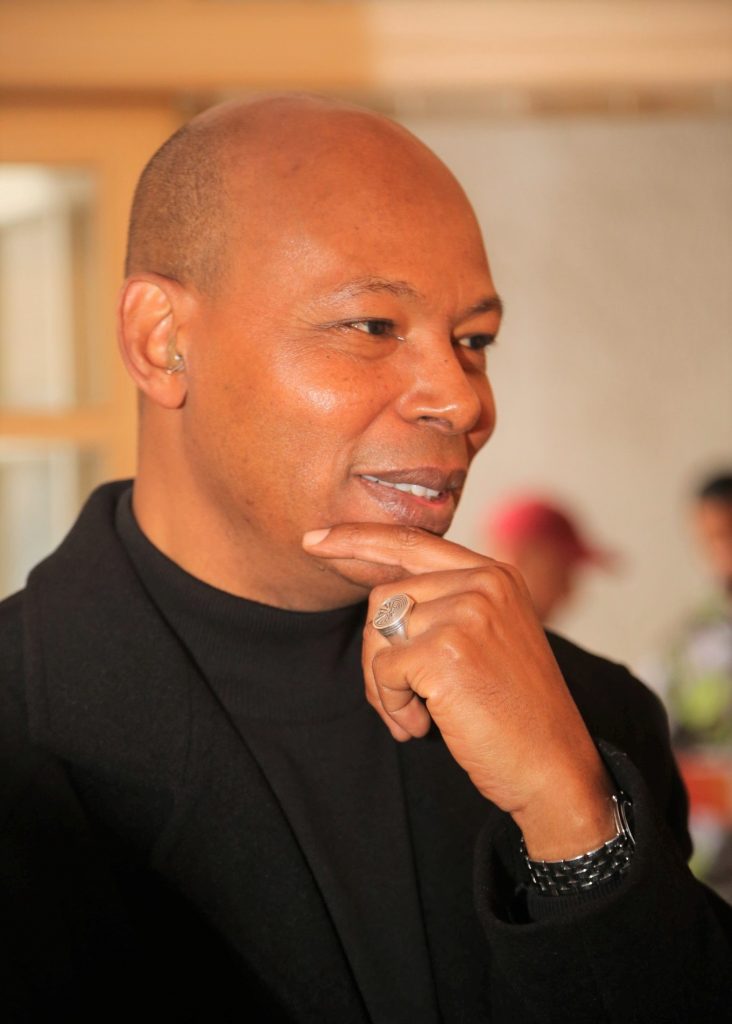
Thus the city’s geographic setting and its unique architectural properties provided Madi with the ability to artistically articulate the light and shadow phenomenon in his thesis and his art of photography. And also to set light on the matter that Ghadames is an endangered historical architectural site, by using his skills as a photographer to bring to us Ghadames in its glory, a city that was able to thrive in the middle of nowhere.
Mr. Madi’s photographic works show Ghadames covered streets and alleyways that almost resemble an underground labyrinth. “Its white rooftops that from afar give off an abstract scenery, making it seem like a mountain setting from Greenland,” Madi describes.
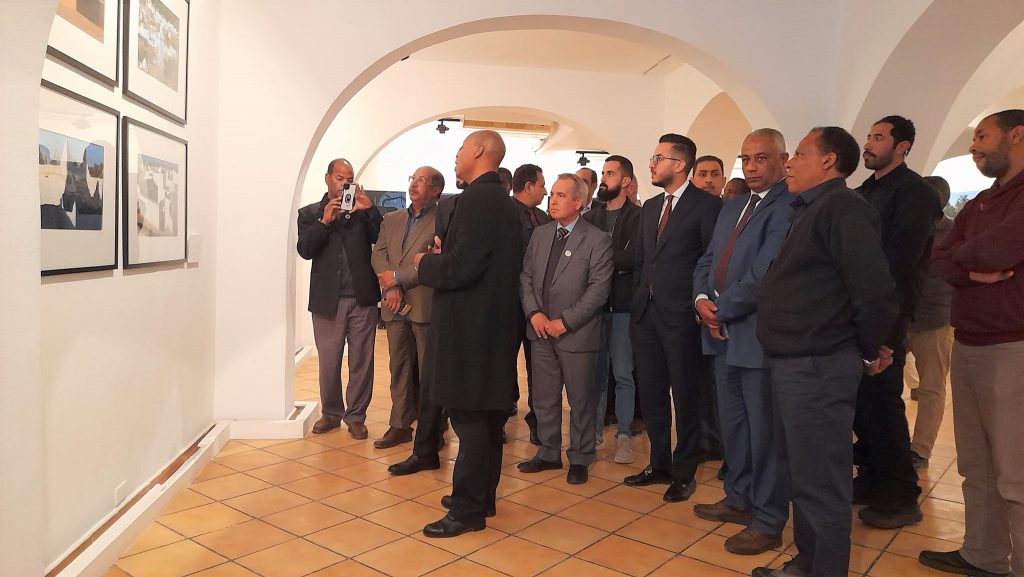
Speaking of the uniqueness of light and shadow, Madi says: “Light and shadow are the first important aesthetic factors in photography and painting.”
“The strong sunlight resulting from the geographical location in Libya leads to a kind of sharp light contrast, meaning that the deep shadows are well defined when compared to the shadows formed in temperate regions such as Europe and North America,” he emphasized.
With regard to his exhibition, Madi stresses that this photographic work can be seen in the middle between European and Arab cultures.
“The photographic shots here approach the abstraction through the artistic expression of the phenomenon of light and shadow in Ghadames, where the architectural design reflects the concept of shadow in that harsh environment has a positive or surviving aspect, representing an exact opposite of the European environment,” he explains.
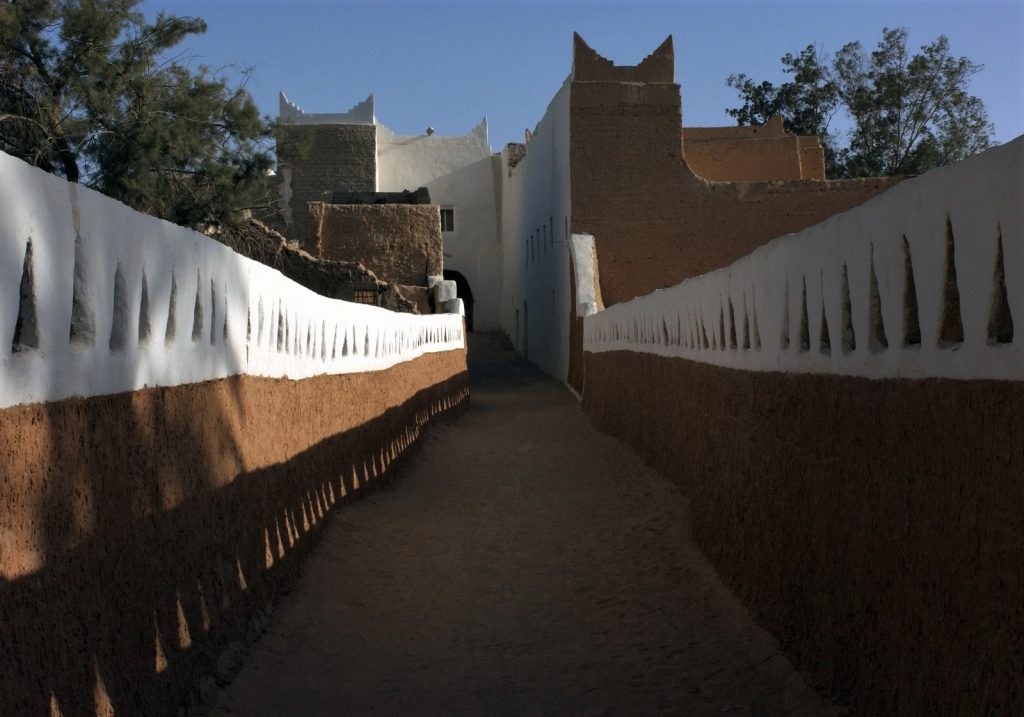
“Ghadames’ building plans and structures as a whole represent a unique work of shadows throughout the day until sunset, and hence the main objective of this artwork. That is, embodying the aesthetics of light and studying it, bypassing the physical and technical properties of photography,” he added.
The exception about Ghadames when compared, for example, to similar architectures in Mali, is found in the distinction of the buildings in the former.
“We speak here about not a single building, in which clay constitutes the basic material in construction due to its properties such as resistance to heat and sunlight, but rather about an entire city that was built to form one integrated piece, more like a beehive,” Mr. Madi stresses.
“In the city of Ghadames, not only the mosques and houses are planned, but also the streets, alleys, intersections and resting points in the shade lit by the sun. The city of Ghadames was built in the form of a maze, so that the roof obscures the sun’s rays and leaves openings for lighting. There are those who believe that the city is under the ground, but in reality Ghadames is built above the ground.”
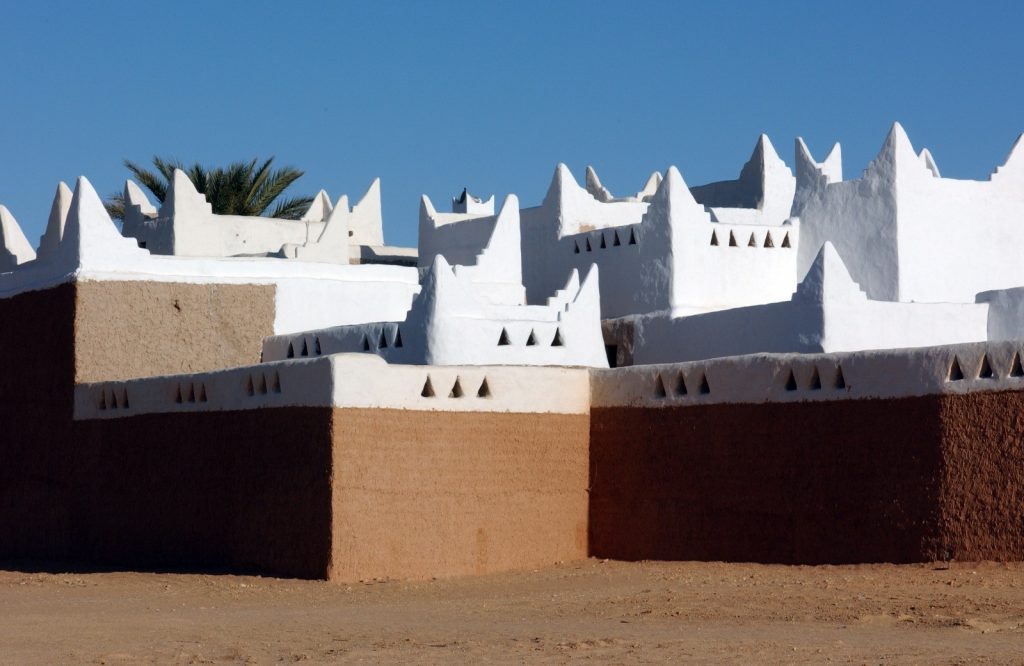
“The architectural goal was not to block the sun but to reduce the heat of the sun,” and in that the Ghadamesi people have been proved correct, he maintained.
When asked about the state of the art of photography and photographers in Libya, Dr. Hakim Madi said: “Generally, there have been no creative waves in the field of photography in Libya in the past. Both on the technical level and in terms of the subjects chosen for photography.”
He attributes this shortcoming to the lack of simply “a photography-friendly environment” that encourages the interested individuals to improve their skills and be known in the art community in the country. He points to the lack of references and related publications such as specialized magazines, newspapers, books, lectures and most of all the lack of photography exhibitions in Libya.
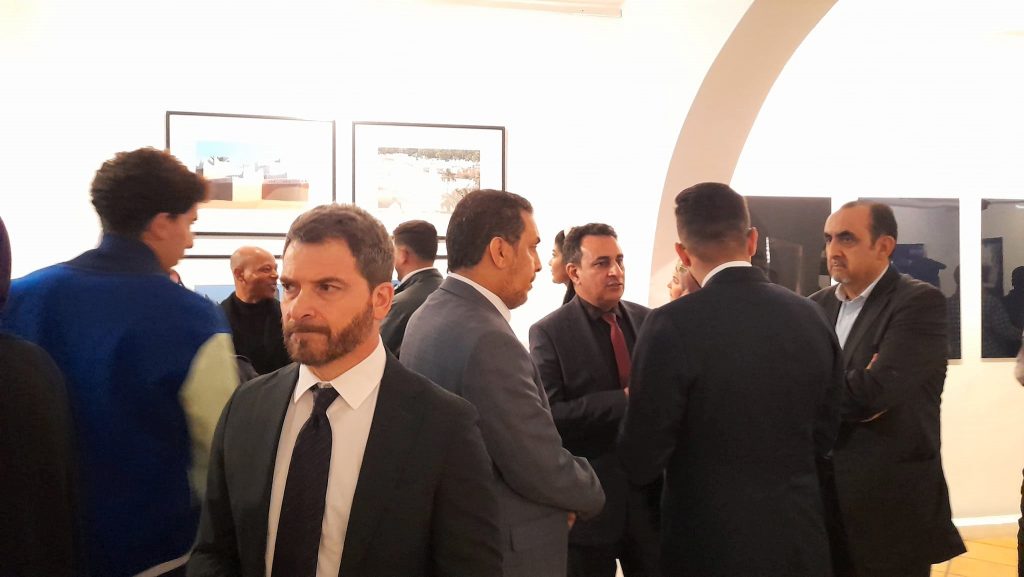
“The lack of artistic ideas and available creativity is what prompted me to research and work on the topic ‘Light and Shadow in the City of Ghadames’”. He explained that this reality represented a personal interest at first and I hope it will benefit Libyan photographers as well.
Historically, Ghadames has always been a topic of interest for photographers who for hundreds of years became curiously, for whatever reason, involved in documenting Ghadames’ social, economic, political, cultural and architectural life.
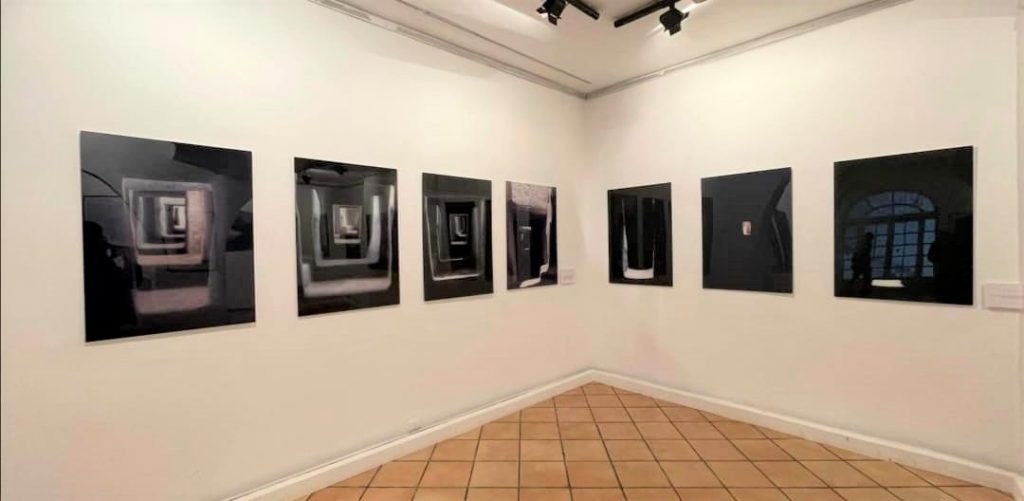
In this respect, Madi says that the history of photography in Ghadames revolves around the importance of the city for the so-called researchers of Africa, such as the British Alexander Gordon Laing and James Richardson in the early 19th century along with the German researcher Gerhard Rohlfs later.
At first, most of the documents on Ghadames were sketches, followed shortly by photography. The first photographic documents were made by the traveler Victor Largeau at the end of the nineteenth century, followed by Impressionist photographs by Marcel und Roselyne Honrois, which formed the Impressionist basis on which later Libyan photographers relied.
In conclusion, it is for the sake of all these material facts and the effort of so many generations for hundreds of years that Ghadames should not be forgotten or endangered. All national and international organizations, whose task is related to the preservation of historical and heritage sites around the world, are required to pay a close attention into this city and make all efforts to protect and develop it for its own inhabitants, for the world and for humanity.
*S. Ali, contributed to this article.
